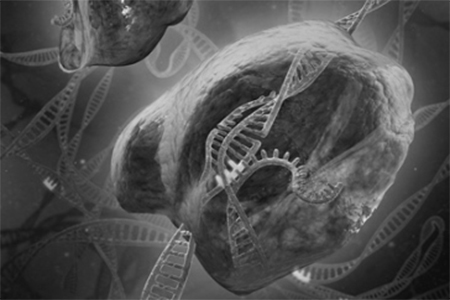
The use of this acronym has become ubiquitous in the life sciences. For those who don't know, CRISPR stands for
Clustered Regularly Interspersed Palindromic Repeats. We hear people talking about it in the context of gene editing of cell lines and animal models.
There are now scientific conferences devoted to CRISPR technology, CRISPR in the clinic and CRISPR engineering of
animal models. While the intellectual property landscape continues to unfold, scientists are rapidly taking advantage of services being offered by numerous companies to help advance their studies. However, as we gain more experience with CRISPR, we are learning that not all gene editing can be carried out utilizing this technology.
How CRISPR Can Be Used to Generate Targeted GEMs Quickly
One way CRISPR can be used is to allow investigators at pharmaceutical and biotech companies to generate
targeted GEMs very quickly. This speed will provide quick answers to critical questions. The CRISPR models may be simple, for proof of concept in model development, or may serve as the model used in drug development discovery research.
Consider the Animal Model Development Timeline
CRISPR will allow relatively quick answers to research questions due to the rapid nature of the process. Ultimately though, researchers have to consider the entire timeline for animal model development. Certainly, CRISPR can play a part in that development, but discussions with CRISPR experts is very important to decide whether CRISPR model development is right for your project.
Focus on the End Goal
When developing animal models, one needs to focus on the end goal of the animal model. How will it be used? What is its purpose? You should seek out expert model development scientists who understand the answers to those questions. Only when you have answered those questions can you plan how to generate the model, deciding which tools to use. Additionally, developing GEM rats has been difficult; CRISPR technology offers a way to generate GEM rats in a targeted manner which is not possible through traditional
transgenic technology. Studies that had previously been limited to mice can now be envisioned in rats by using CRISPR gene-editing technologies.
Seeking Experts
When contemplating development of a
genetically engineered model, seek out a provider who has capabilities beyond just CRISPR, otherwise the model may be developed using CRISPR, but it may not be the best possible model to meet the goals of your study. Seek out a provider who has a variety of model generation tools and who can also provide the downstream breeding and analysis. This will maximize the chances of success.
 View the Taconic Biosciences' Webinars:
View the Taconic Biosciences' Webinars:
 The use of this acronym has become ubiquitous in the life sciences. For those who don't know, CRISPR stands for Clustered Regularly Interspersed Palindromic Repeats. We hear people talking about it in the context of gene editing of cell lines and animal models.
The use of this acronym has become ubiquitous in the life sciences. For those who don't know, CRISPR stands for Clustered Regularly Interspersed Palindromic Repeats. We hear people talking about it in the context of gene editing of cell lines and animal models. 















.jpg)

.jpg)
.jpg)
.jpg)
.jpg)





.jpg)


.jpg)
.jpg)




.jpg)




.jpg)

.jpg)




